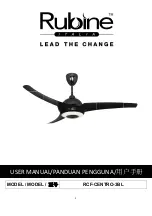
*SAFETY INSPECTION OF A PREVIOUSLY USED GAS APPLIANCE
(Perform prior to GPAK installation)
The following procedure is intended as a guide to aid in determining that an appliance is properly installed and is in safe condition for
continuing use.
The following procedure is based on central furnace and boiler installations and it should be recognized that generalized procedures
cannot anticipate all situations. Accordingly, in some cases deviation from this procedure may be necessary to determine safe opera-
tion of the equipment.
a. Perform this procedure prior to any attempt at modifications of the appliance or installation of the GPAK.
b. If it is determined there is a condition which could result in unsafe operation, shut off the appliance and advise the owner of the
unsafe condition.
Follow the steps below in making the safety inspection:
1. Conduct a gas leakage test of the appliance piping and control system downstream of the shutoff valve in the supply line to the
appliance.
2. Visually inspect the venting system and determine there is no blockage or restriction, leakage, corrosion and other deficiencies
which could cause an unsafe condition.
3. Shut off all gas to the appliance(s).
4. Inspect burners and crossovers for blockage and corrosion.
5. Applicable only to furnaces: Inspect heat exchanger for cracks, openings or excessive corrosion. Check both the limit control
and fan control for proper operation.
6. Applicable only to boilers: Inspect for evidence of water or combustion product leaks. Determine that the water pumps are in
operating condition. Test low water cutoffs, automatic feed controls, pressure and temperature limit controls and relief valves in
accordance with the manufacturer's recommendations to determine that they are in operating order.
* Excerpts from the National Fuel Gas Code (ANSI Z223.1/NFPA #54), Appendix H.
VENT HOOD LOCATION
If possible, locate the Vent Hood on a wall that does not face the direction of prevailing winds. This will diminish the possibility of
appliance interruption during periods of extreme winds.
If possible, locate the Vent Hood no closer than 3 feet from an inside corner of an L-shaped structure.
CODE REQUIREMENTS
Terminate the vent system so that proper minimum clearances are maintained as cited in the latest edition of the National Fuel Gas
Code (NFPA # 54) and the latest edition of NFPA #211, or as follows:
• Not be less than 7 feet above grade when located adjacent to public walk ways.
• At least 3 feet above any forced air inlet located within 10 feet.
• At least 4 feet below, 4 feet horizontally from or 1 foot above any door, window or gravity air inlet into any building.
• At least 12 inches above grade.
• So that the flue gases are not directed so as to jeopardize people, overheat combustible structures or enter buildings, and
• Not less than 2 feet from an adjacent building.
4
Summary of Contents for 1
Page 9: ...8 ...
Page 10: ...9 ...
Page 12: ...11 WIRING GPAK JT GPAK 1T WITH THERMOSTAT ...
Page 18: ...17 GPAK 1 GPAK 1T ...





































